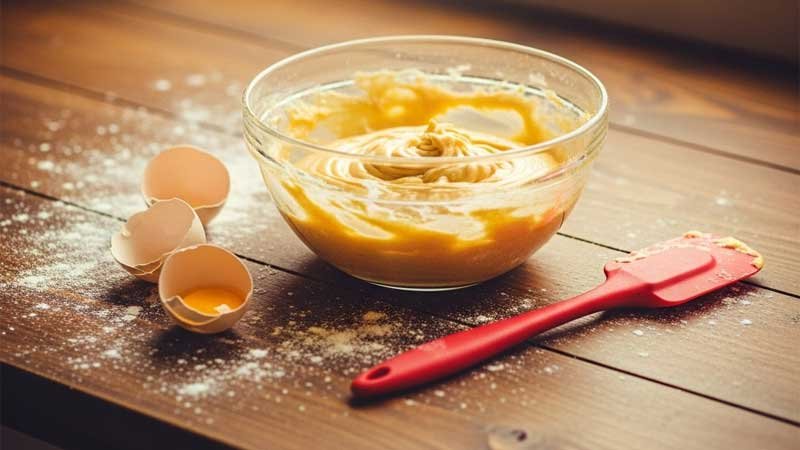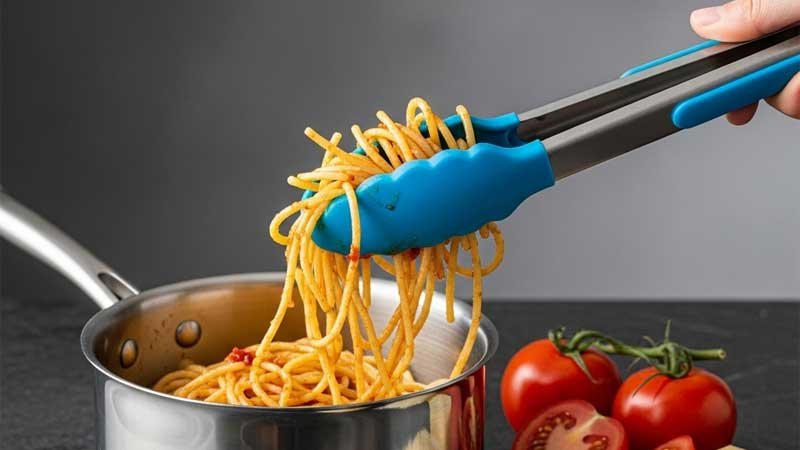In the kitchen, more and more people are choosing colorful silicone tools. They look fun, feel soft, resist heat, and don’t stick. But some people worry whether these bright colors are truly food-safe. Could the color contain harmful substances?
This article will break it down for you, from the materials used to safety standards and smart buying tips.
Why Are Silicone Kitchen Tools So Colorful?
Silicone kitchen tools come in bright colors. This is because of how they’re made and what people want. Silicone is easy to color. Before it’s shaped into tools, liquid or solid silicone can be safely mixed with food-grade pigments. These pigments blend well and don’t affect how the silicone performs.
Once the mix is molded and cured at high heat, the color becomes part of the tool, not just on the surface. It won’t fade easily, even with daily use. This makes it simple and cost-effective to create colorful tools that last.
Bright colors also meet modern kitchen trends. Today, kitchens are more than cooking spaces. They show personal style. Colorful silicone tools add energy, help organize tasks by color, and make cooking more fun. That’s why they’ve become a favorite in homes everywhere.

Are the Pigments in Colorful Silicone Tools Safe?
The bright colors of silicone kitchen tools come from added pigments. Whether these tools are food-safe depends a lot on the safety of pigments.
Types of Pigments Used
There are two main kinds of pigments used in silicone:
- Inorganic pigments: These include iron oxides (for red, yellow, black), titanium dioxide (white), and food-grade carbon black. They’re very stable under heat and chemicals. Their heavy metal content is strictly controlled, making them a safe choice for food-grade silicone.
- Organic pigments: Some synthetic organic pigments, like phthalocyanine blue or green, can also be used. But they must be very pure and free from harmful compounds.
Can Pigments Migrate into Food?
Usually, pigment particles are tightly locked inside the silicone. But if the pigment is low-quality, contains impurities, or isn’t fully bonded with the silicone, there’s a risk it could leach out, especially with high heat, soaking, or scraping. Poor-quality pigments can also break down and release harmful substances when overheated.
Good manufacturers do three key things:
- Use only food-safe pigments that resist heat and chemicals.
- Mix pigments evenly and bond them well into the silicone during production.
- Fully cure the silicone, forming a strong, stable network that keeps pigments locked in.

How Can We Make Sure the Colors in Silicone Kitchen Tools Are Safe?
To keep silicone kitchen tools safe, the color pigments must meet strict food safety rules.
In the U.S., the FDA has a rule called 21 CFR Part 178.3297. It lists which pigments can be used in food-contact materials like silicone. Some colors, such as FD&C dyes, need FDA approval for each batch. Others, like titanium dioxide and iron oxide, are safe if they meet purity standards. Pigment suppliers must give a compliance letter to prove this.
In Europe, pigments must follow REACH and LFGB rules. REACH checks that pigments do not contain harmful chemicals. LFGB testing makes sure that no dangerous substances move from the silicone into your food.
Good silicone products use food-grade pigments that do not leak out, even at high heat. Reliable makers will check every pigment and use certified safe materials. This makes colorful silicone tools safe and fun to use.
How to Choose Safe Silicone Kitchen Products?
If you want safe and colorful silicone kitchen tools, it’s important to know what to look for when shopping.
- Check for safety labels
- Look for terms like Food Grade Silicone or FDA Approved on the packaging. Trusted brands or well-reviewed products are usually more reliable.
- Smell test
- High-quality silicone should have little to no smell. If it smells strong or chemical-like, it’s better not to buy it.
- Touch and feel
- Good silicone feels smooth and soft. It shouldn’t feel sticky or pick up dust easily.
- Try the pinch test
- Pinch and twist the silicone. If the bent area stays the same color, it usually means the pigment is safe and well mixed. If it turns white, it might contain low-quality filler or poor pigments. But remember—this is just a simple test, not a guarantee.
- Don’t go for the cheapest option
- Very cheap silicone tools may be made with unsafe materials or skip important steps like post-curing. This could lead to safety problems over time.
Making smart choices helps you enjoy silicone tools that are safe, durable, and fun to use in your kitchen.

Common Myths About Silicone Kitchenware – Cleared Up
When buying or using silicone tools, many people have the wrong ideas. Let’s clear up these common myths, so you can use silicone products with more confidence.
Bright-colored silicone is unsafe. White or clear is always better?
Truth: This is not true. The color itself doesn’t decide safety. What matters is whether the pigments used are food-grade and if the production process meets safety standards. As long as the product meets FDA, REACH, or LFGB requirements, any color—even red or blue—is safe. On the other hand, even white or clear silicone could be unsafe if made with poor materials or low-quality processing. Always look for trusted certifications, not just color.
It’s normal for new silicone to have a strong smell?
Truth: A light smell can be normal when you first open a new silicone product. It usually comes from leftover volatile compounds if the silicone wasn’t fully cured during production. Good-quality silicone should go through post-curing. This reduces this smell. After a proper wash before the first use, any light odor should go away. But if the smell is strong and chemical-like, it could be a sign of low-quality materials. In that case, it’s best not to use it.
If it picks up dust or gets sticky, it must be bad quality?
Truth: Not necessarily. Silicone naturally attracts dust due to static electricity. Over time, oil or soap residue can also make it feel sticky. This doesn’t mean it’s unsafe. A good wash with mild soap and water usually solves the problem. If it still feels very sticky after cleaning, the silicone might be poor-quality or not cured properly.

Conclusion
Colorful silicone tools are generally safe to use. The key is whether they’re made with food-grade colorants, produced properly, and tested thoroughly. There’s no need to avoid colorful products just because of their appearance, but it’s smart to steer clear of cheap, unbranded items without safety certifications.
If you’re looking for custom silicone products that are both vibrant and safe, we can help. We use certified food-grade materials and offer flexible, reliable customization. Let’s bring your colorful ideas to life—safely and professionally.